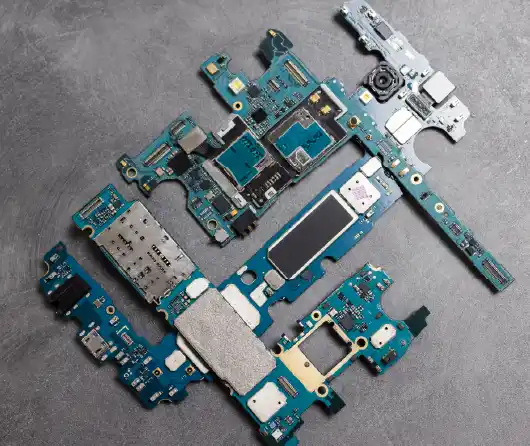Call Us:
Sales (India): +91 91488 14400
Sales (USA): +1 267 703 5359
HR: +91 80250 34302
Building Tomorrow’s Workplace Today: A Comprehensive New Office IT Infrastructure Checklist
- Home
- Building Tomorrow’s Workplace Today: A Comprehensive New Office IT Infrastructure Checklist
The evolution of the modern workplace demands a robust IT infrastructure that can support the diverse needs of an organization. As businesses embark on the journey of setting up a new office, whether due to expansion, relocation, or a tech upgrade, a meticulously planned IT infrastructure is paramount. In this blog, we will delve into a comprehensive checklist for a new office IT infrastructure, backed by factual data and real-world insights.

The Strategic Importance of IT Infrastructure in a New Office
1. The Backbone of Business Operations
A well-designed IT infrastructure serves as the backbone of business operations, helping seamless communication, collaboration, and the efficient flow of information. According to a survey by Deloitte, 69% of executives view digital technologies as essential for their organization’s success, highlighting the strategic significance of a robust IT foundation.
2. Enabler of Innovation and Productivity
A modern IT infrastructure is not just about supporting day-to-day operations; it’s a catalyst for innovation and productivity. As organizations embrace digital transformation, their IT ecosystems become key enablers for adopting emerging technologies, enhancing employee efficiency, and staying competitive in the market.
The New Office IT Infrastructure Checklist
1. Network Infrastructure
a. Internet Connectivity:
Evaluate and choose a dependable internet service provider with sufficient bandwidth.
Consider redundant internet connections to ensure connectivity in case of outages.
b. Wired and Wireless Networks:
Plan and implement a robust wired network infrastructure.
Deploy secure and scalable wireless networks, considering the expected number of devices.
c. Network Security:
Implement firewalls and intrusion detection/prevention systems.
Utilize VPNs (Virtual Private Networks) for secure remote access.
2. Hardware and End-User Devices
a. Desktops, Laptops, and Workstations:
Choose hardware that aligns with the organization’s performance requirements.
Consider ergonomic factors to promote employee well-being.
b. Printers and Scanners:
Deploy efficient and secure printing solutions.
Implement print management to watch and control printing activities.
c. Mobile Devices:
Implement a Mobile Device Management (MDM) solution for security and control.
Establish policies for BYOD (Bring Your Own Device) scenarios.
3. Servers and Data Storage
a. Server Infrastructure:
Figure out the server requirements based on workload and applications.
Consider virtualization for best resource use.
b. Data Storage and Backup:
Implement a scalable and secure data storage solution.
Establish automated backup procedures with offsite storage for data protection.
c. Cloud Integration:
Evaluate cloud services for storage, computing, and backup needs.
Implement a hybrid or multi-cloud strategy for flexibility and resilience.
4. Software and Applications
a. Office Productivity Suite:
Choose a comprehensive productivity suite that aligns with organizational needs.
Ensure proper licensing and compliance.
b. Collaboration Tools:
Deploy collaboration platforms for seamless communication.
Consider video conferencing, messaging, and project management tools.
c. Security Software:
Install robust antivirus and anti-malware solutions.
Implement endpoint protection and security patches.
5. Cybersecurity Measures
a. Firewalls and Intrusion Detection Systems:
Implement firewalls to watch and control incoming and outgoing network traffic.
Deploy intrusion detection and prevention systems for real-time threat mitigation.
b. Authentication and Access Controls:
Enforce strong password policies and multi-factor authentication.
Implement role-based access controls to restrict unauthorized access.
c. Security Training:
Arrange cybersecurity awareness training for employees.
Conduct simulated phishing exercises to enhance resilience against social engineering attacks.
6. Audio-Visual and Meeting Room Technology
a. Video Conferencing Systems:
Implement high-quality video conferencing solutions for remote collaboration.
Ensure compatibility with various devices and platforms.
b. Meeting Room Equipment:
Equip meeting rooms with audio-visual technology for presentations and discussions.
Integrate smart boards or interactive displays for enhanced collaboration.
c. Unified Communications:
Implement unified communication platforms for seamless integration of voice, video, and messaging.
Ensure compatibility with mobile devices and remote work scenarios.
7. Disaster Recovery and Business Continuity
a. Data Backups and Recovery Plans:
Regularly back up critical data and assess the restoration process.
Establish clear recovery time objectives (RTO) and recovery point objectives (RPO).
b. Redundancy and Failover Systems:
Implement redundant systems for critical infrastructure components.
Plan for failover mechanisms to ensure continuity in case of system failures.
c. Incident Response Plan:
Develop an incident response plan outlining steps to address cybersecurity incidents.
Conduct regular drills to assess the effectiveness of the response plan.
8. Compliance and Data Privacy
a. Regulatory Compliance:
Ensure adherence to industry-specific regulations and compliance standards.
Conduct regular audits to confirm compliance.
b. Data Privacy Measures:
Implement measures to protect sensitive customer and employee data.
Establish data governance policies to govern data handling practices.
Real-World Considerations and Success Stories
1. Google’s Office IT Infrastructure
Google, known for its innovative technology, has a robust IT infrastructure designed to support its vast operations. The company places a strong emphasis on cloud computing, using a combination of custom hardware and cloud services to create a scalable and efficient IT ecosystem.
2. The Modern Workplace at Microsoft
Microsoft’s modern workplace strategy incorporates a flexible IT infrastructure that supports a diverse workforce. The company emphasizes the use of cloud-based solutions, collaboration tools, and security measures to create a connected and productive work environment.
Conclusion: Future-Ready Foundations
In conclusion, setting up a new office demands careful planning and execution of an IT infrastructure that aligns with the organization’s present needs and future aspirations. Factual data and real-world examples underscore the critical role of a comprehensive IT infrastructure in driving business success, innovation, and resilience. By following this checklist and staying attuned to emerging technologies, organizations can build a future-ready foundation that empowers their workforce, enhances productivity, and ensures a seamless integration of technology into the fabric of the modern workplace.
Read More
Address
-
No. 12, Earthen Phoenix,
Sanjeevappa Layout,
10th E cross,
Nagavarapalya Main Road,
C.V.Raman Nagar,
Bengaluru – 56 00 93













